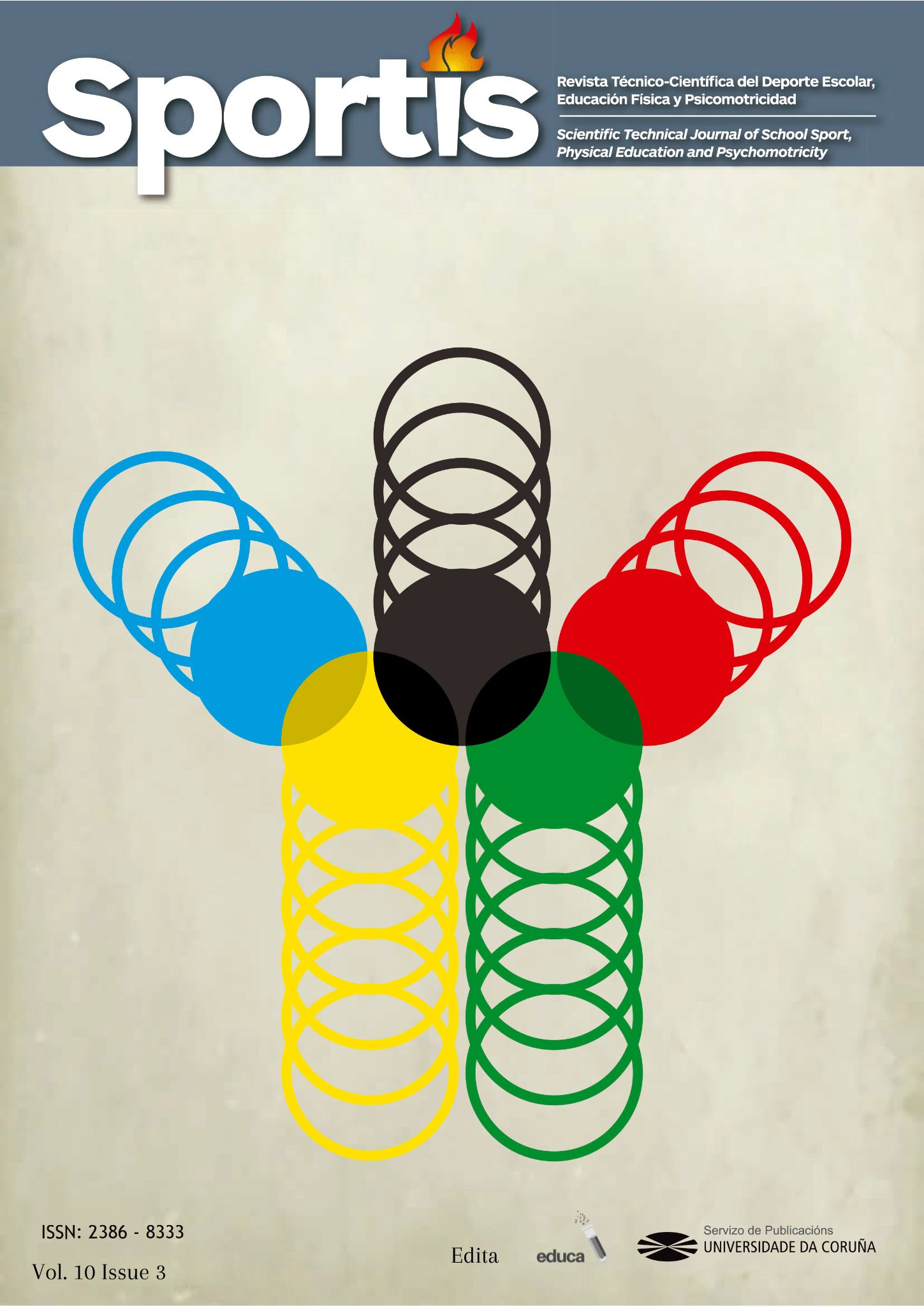Effect of strength training using level of effort on 50 meters finswimming performance
Main Article Content
Abstract
The way to train strength has been varying according to the needs of each sport, therefore a study that contributes on the results obtained in the 50 meters bi-fins after training through the Level of Effort CE can help to have foundations when making decisions on how to train strength in sprinters of this competitive modality. To measure the effect of a five-week intervention by CE in 11 finswimmers of the Antioquia national finswimming team that participated in the National Games 2023. It is a pre-experimental study without control group with a specialized performance population in which the times obtained in the 50 meters bi-row were used as pre-test and post-test and the described methodology was used to carry out the strength training. No improvement in times was achieved after such intervention. It is possible that the methodology is adequate and in fact the average of the results improved, however, with the limitations of the study in terms of number of participants and intervention times, no significant improvements were obtained in the times of the test, after the intervention was carried out.
Keywords:
Downloads
Article Details
References
Agudelo-Velásquez, C.A. (2012). Planificación por Modelamiento. Kinesis
Assis Correia, R., Prado, A., Teixeira, C., & Franken, M. (2017). Relação entre força isométrica de extensão de joelhos e quadris e o desempenho na virada do nado livre. Revista Brasileira de Ciência e Movimento, 25(2), 13–22. https://doi.org/10.31501/RBCM.V25I2.6577 DOI: https://doi.org/10.31501/rbcm.v25i2.6577
Baena-Marín, M., Rojas-Jaramillo, A., González-Santamaría, J., Rodríguez-Rosell, D., Petro, J. L., Kreider, R. B., & Bonilla, D. A. (2022). Velocity-based resistance training on 1-RM, jump and sprint performance: A systematic review of clinical trials. Sports, 10(1), 8. https://doi.org/10.3390/sports10010008 DOI: https://doi.org/10.3390/sports10010008
Barbosa, A. C., & Andries Júnior, O. (2006). Efeito do treinamento de força no desempenho da natação. Revista Brasileira de Educação Física e Esporte, 20(2), 141–150.
Beltrán-Rodríguez, J. D., Agudelo-Velásquez, C. A. (2023). Efecto de un plan por modelamiento en 100 metros crol en nadadoras juveniles de Bogotá. Actividad física y desarrollo humano, 11(1), 1–9.
Born, D. P., Stöggl, T., Petrov, A., Burkhardt, D., Lüthy, F., & Romann, M. (2020). Analysis of freestyle swimming sprint start performance after maximal strength or vertical jump training in competitive female and male junior swimmers. The Journal of Strength & Conditioning Research, 34(2), 323-331. https://doi.org/10.1519/JSC.0000000000003390 DOI: https://doi.org/10.1519/JSC.0000000000003390
Brzycki, M. (1993). Strength testing: predicting a one rep-max from repetitions to fatigue. Journal of Physical Education, Recreation & Dance, 64(1), 88–90. DOI: https://doi.org/10.1080/07303084.1993.10606684
Corvos-Hidalgo, C. A., Bizzozero-Peroni, B., Fernández-Gimánez, S., & Pintos-Toledo, E. (2022). Concordancia entre ecuaciones de predicción y el método de 1RM en cuatro ejercicios de entrenamiento resistido. Educación Física y Ciencia, 24(2), 1-10. https://doi.org/10.24215/23142561e222 DOI: https://doi.org/10.24215/23142561e222
Fone, L., & van den Tillaar, R. (2022). Effect of Different Types of Strength Training on Swimming Performance in Competitive Swimmers: A Systematic Review. Sports Medicine - Open, 8(1), 1–26. DOI: https://doi.org/10.1186/s40798-022-00410-5
González Álvarez, Y. (2020). Efectos del entrenamiento de fuerza sobre los resultados de la prueba en competición, los niveles de fuerza y el control del lactato en nadadores con aletas. Bogotá : Universidad de Ciencias Aplicadas y Ambientales, 2020. Disponible en: https://repository.udca.edu.co/handle/11158/3707
González-Badillo, J. J., & Escrivá-Sellés, F. R. (2020). Efecto de dos periodos de entrenamiento de fuerza sobre el rendimiento en los ejercicios de salto vertical, tintorera y boost en natación sincronizada. Apunts. Educación física y deportes, 4(142), 35-45. https://doi.org/10.5672/apunts.2014-0983.es.(2020/4).142.05 DOI: https://doi.org/10.5672/apunts.2014-0983.es.(2020/4).142.05
González-Badillo, J. J., Sánchez-Medina, L., Pareja-Blanco, F., & Rodríguez-Rosell, D. (2017). La velocidad de ejecución como referencia para la programación, control y evaluación del entrenamiento de fuerza. ERGOTECH
González-Badillo, J. J., Sánchez-Medina, L., Ribas-Serna, J., & Rodríguez-Rosell, D. (2022). Toward a new paradigm in resistance training by means of velocity monitoring: a critical and challenging narrative. Sports Medicine-Open, 8(1), 118. https://doi.org/10.1186/s40798-022-00513-z DOI: https://doi.org/10.1186/s40798-022-00513-z
González-Badillo J.J. & Ribas Serna J. (2002). Bases de la programación del entrenamiento de la fuerza. 1ª ed. Inde.
Hernández-Belmonte, A., Courel-Ibáñez, J., Conesa-Ros, E., Martínez-Cava, A., & Pallarés, J. G. (2022). Level of effort: A reliable and practical alternative to the velocity-based approach for monitoring resistance training. The Journal of Strength & Conditioning Research, 36(11), 2992-2999. https://doi.org/10.1519/JSC.0000000000004060 DOI: https://doi.org/10.1519/JSC.0000000000004060
Hernández Sampieri, R., Fernández Collado, C., & Baptista Lucio, P. (2014). Metodología de la investigación. In P. Baptista (Ed.), Online Learning Center (sexta). McGraw-Hill Education.
Masiá Fons, J., & Bazuelo Ruiz, B. (2022). Efecto de un entrenamiento de fuerza de seis semanas en la salida en jóvenes nadadores. Acción Motriz, 29(1), 114-125. Recuperado a partir de https://www.accionmotriz.com/index.php/accionmotriz/article/view/196
Rozi, G., & Thanopoulos, V. (2018). Prediction model of influence of force on land and performance in fin swimming, a pilot study. Physical Culture , 72(1), 96–101. https://doi.org/10.5937/fizkul1801096R DOI: https://doi.org/10.5937/fizkul1801096R
Schumann, M., Notbohm, H., Bäcker, S., Klocke, J., Fuhrmann, S., & Clephas, C. (2020). Strength-training periodization: no effect on swimming performance in well-trained adolescent swimmers. International journal of sports physiology and performance, 15(9), 1272-1280. https://doi.org/10.1123/ijspp.2019-0715 DOI: https://doi.org/10.1123/ijspp.2019-0715
Tamayo & Tamayo, M. (2005). Metodología formal de la investigación Científica. Limusa.
Vera, J., Jiménez, R., Redondo, B., Torrejón, A., De Moraes, C. G., & García-Ramos, A. (2019). Effect of the level of effort during resistance training on intraocular pressure. European Journal of Sport Science, 19(3), 394-401. https://doi.org/10.1080/17461391.2018.1505959 DOI: https://doi.org/10.1080/17461391.2018.1505959
Weakley, J., Mann, B., Banyard, H., McLaren, S., Scott, T., & Garcia-Ramos, A. (2021). Velocity-based training: From theory to application. Strength & Conditioning Journal, 43(2), 31-49. https://doi.org/10.1519/SSC.0000000000000560 DOI: https://doi.org/10.1519/SSC.0000000000000560
Yu, K.-H., Suk, M.-H., Kang, S.-W., & Shin, Y.-A. (2014). Effects of combined linear and nonlinear periodic training on physical fitness and competition times in finswimmers. Journal of Exercise Rehabilitation, 10(5), 306-312 https://doi.org/10.12965/JER.140151 DOI: https://doi.org/10.12965/jer.140151







